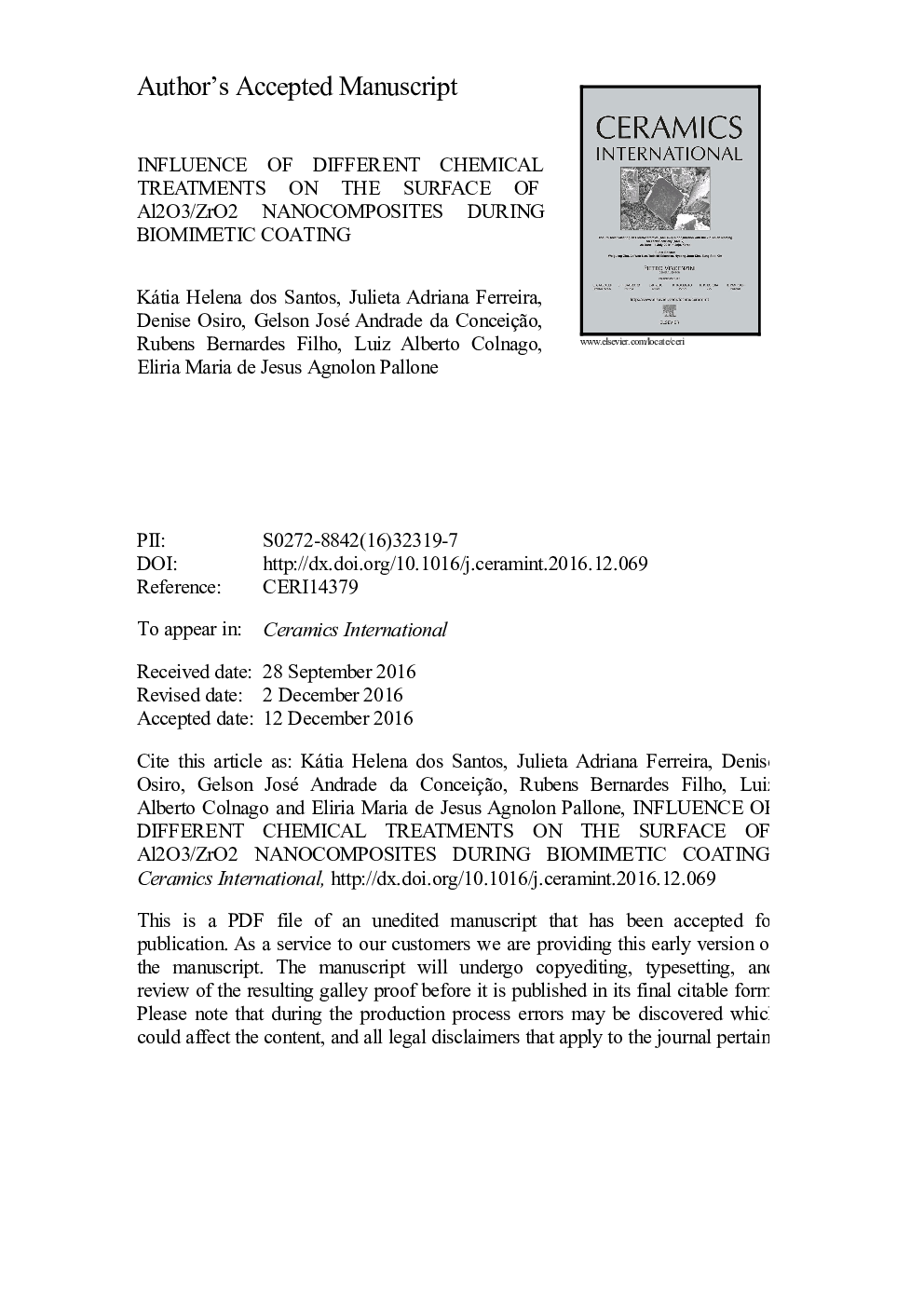| Article ID | Journal | Published Year | Pages | File Type |
|---|---|---|---|---|
| 5439087 | Ceramics International | 2017 | 24 Pages |
Abstract
The objective of this study is to evaluate the influence of different chemical surface treatments (H3PO4, HNO3, and NaOH) in the formation of calcium phosphate phases on the surface of Al2O3/ZrO2 (5 vol%) nanocomposite. For this purpose, Al2O3/ZrO2 samples were shaped, calcined at 400 °C, sintered at 1500 °C, subjected to different chemical treatments, and biomimetically coated from 14 to 21 days. Surface characterization was performed by scanning electron microscopy, atomic force microscopy, confocal microscopy, X-ray diffraction, and infrared spectroscopy. It was observed that the preliminary chemical treatment favored the formation of particular calcium phosphate phases of interest, such as α-TCP (alpha-tricalcium phosphate), β-TCP (beta-tricalcium phosphate), and HA (hydroxyapatite). The differences among the percentages of the phases formed affected the homogeneity of calcium phosphate distribution within the nanocomposites as well as the roughness of the formed layer, effectively contributing to adhesion, proliferation, and desired cell biofixation on bone implant.
Related Topics
Physical Sciences and Engineering
Materials Science
Ceramics and Composites
Authors
Kátia Helena dos Santos, Julieta Adriana Ferreira, Denise Osiro, Gelson José Andrade da Conceição, Rubens Bernardes Filho, Luiz Alberto Colnago, Eliria Maria de Jesus Agnolon Pallone,
